Our architectural focus centers around timber grid-shells as typology. Our examination encompasses the construction process, requisite joinery techniques, and a specific emphasis on location-dependent fabrication considerations. Our reference point, the Savill Garden, serves as a model from which we gain insights into their system, construction methodology, and the integration of edge beams with the shell.
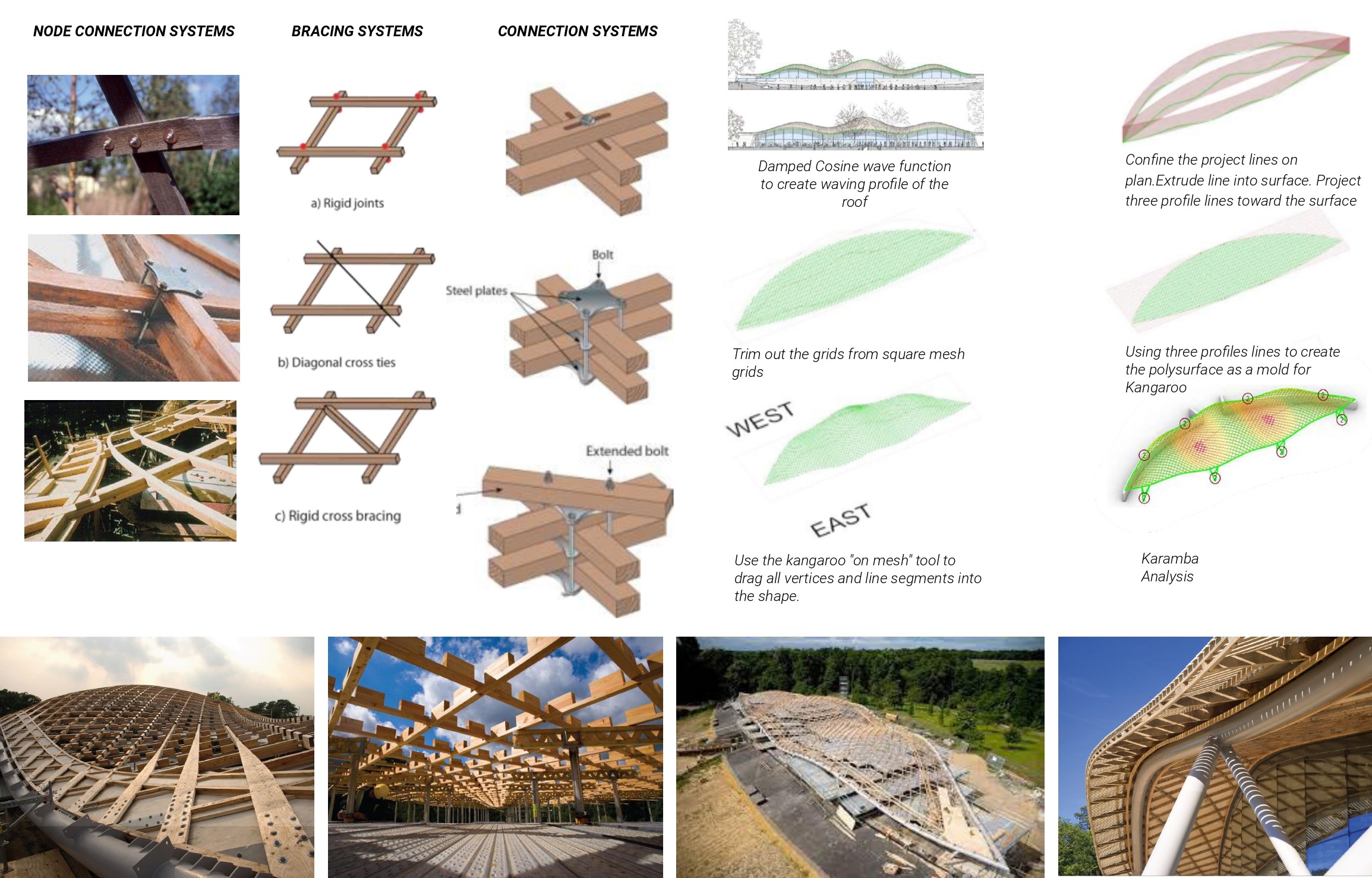
In terms of system parameterization, our approach involves examining the entire process by incorporating various types of boundary curves provided by the designer as input. The grid definition is analyzed and the adaptability of supports, tailored to programmatic requirements is studied as to how they influence the curvature of the grid shell. This examination extends to the integration of these elements into the overall structure. Moreover, our focus includes investigating how curvature and cross-sectional optimization can be subsequently addressed using Karamba.
FORM FINDING :
In relation to the Savill Garden fabrication method, we initiated the process with a glulam beam and continued with the creation of a mesh. Subsequently, a comprehensive cross-section analysis was conducted, encompassing curvature and stress evaluations. Following this, variations in the paneling system were explored to understand the extent of variability relative to the base structure, specifically concerning mean values. The research involved the generation of two variations on the base mesh—one with openings and another without openings. Curvature analyses were performed on both variations, ultimately leading to the determination of the final shape of the shell.
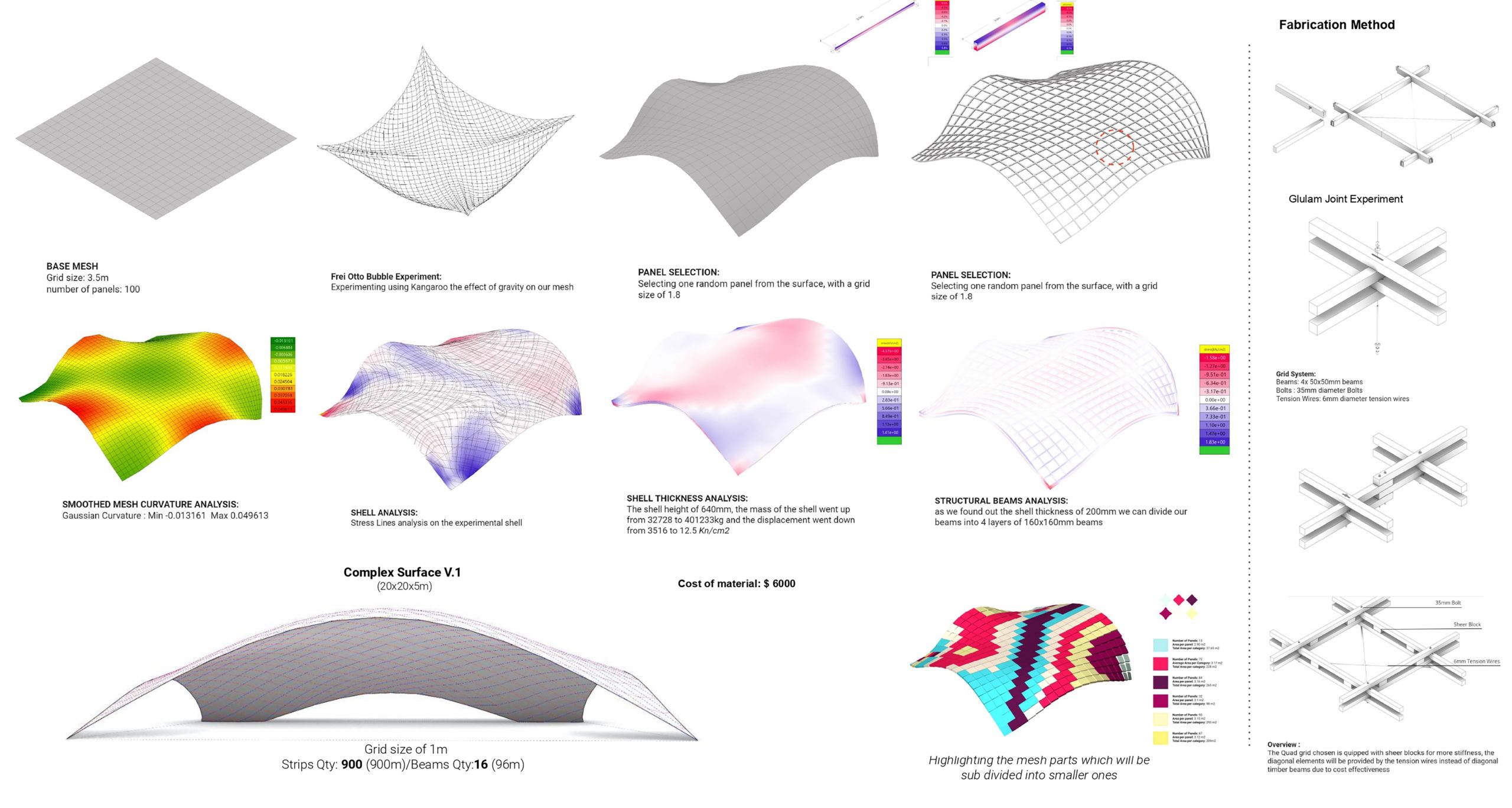
MATRIX OF OPTIONS :
CONTEXTUAL PROJECT IMPLEMENTATION :
The context for the implementation of this project is Guayaquil, Ecuador, specifically within Parque Samanes, which was intended to be one of the largest parks in South America. However, due to political, social, and economic challenges, the park’s construction remained incomplete, leading to disarray in adjacent areas. The planned implementation of our project is marked by the red color on the chosen site. Careful consideration was given to existing structures in the vicinity, such as the open-air theater while designing.
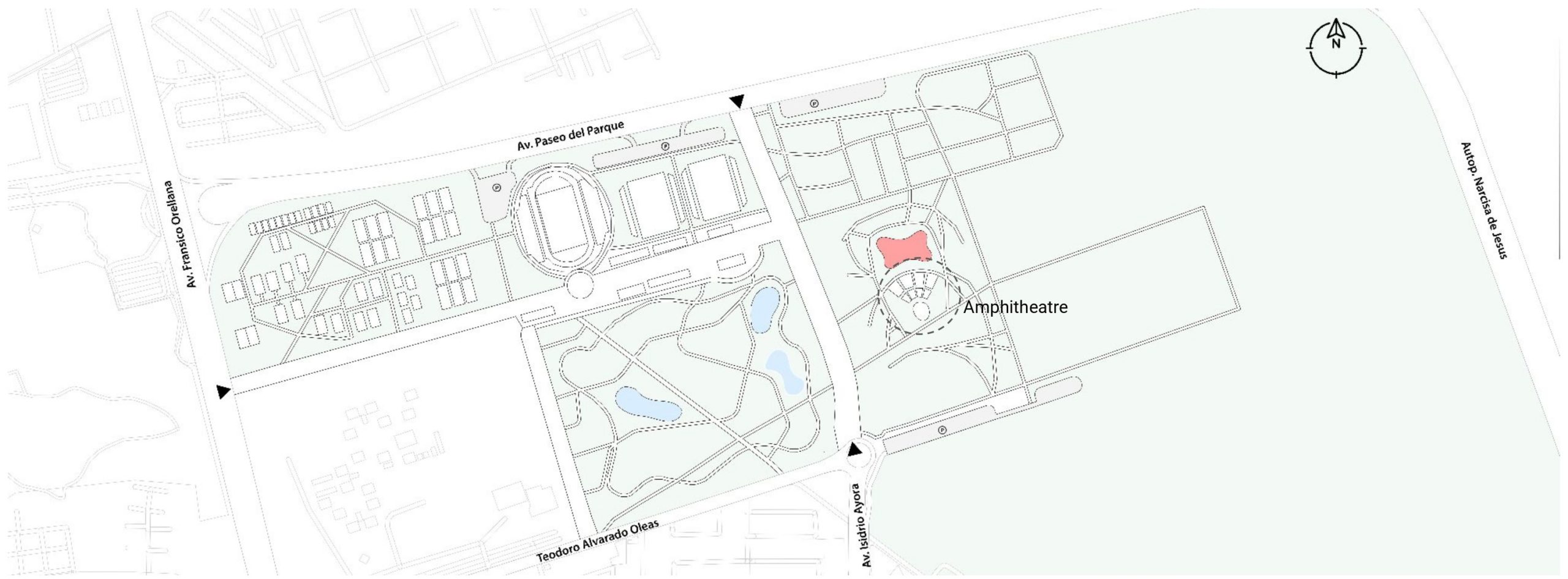
In examining the project’s implementation on the site, we scrutinized various factors that would influence the form and shape. A comprehensive wind analysis was conducted, guiding the positioning of openings in the shell to align with prevailing winds. Notably, the study of incident radiation levels at the site revealed higher values throughout most of the year, prompting an exploration into utilizing ETFE glass for paneling.
The circulation aspects were approached contextually, with a focus on the amphitheater serving as a pivotal connection point for program zoning from the central space. Considering the existing conditions on the site, the proposal centers around a cultural center aligning with innovative approaches given the current developmental phase of the area.
SYSTEM STRUCTURAL EXPLORATION :
Continuing our research, we conducted variations to assess the flexibility of the system. The exploration began by considering boundaries with and without openings. A load variation was looked at to observe the system’s response. Particularly in instances involving openings, it was examined how these could serve as anchor points for creating additional variations. Through experimentation involving upward and downward movements, we derived the final shape of the system.
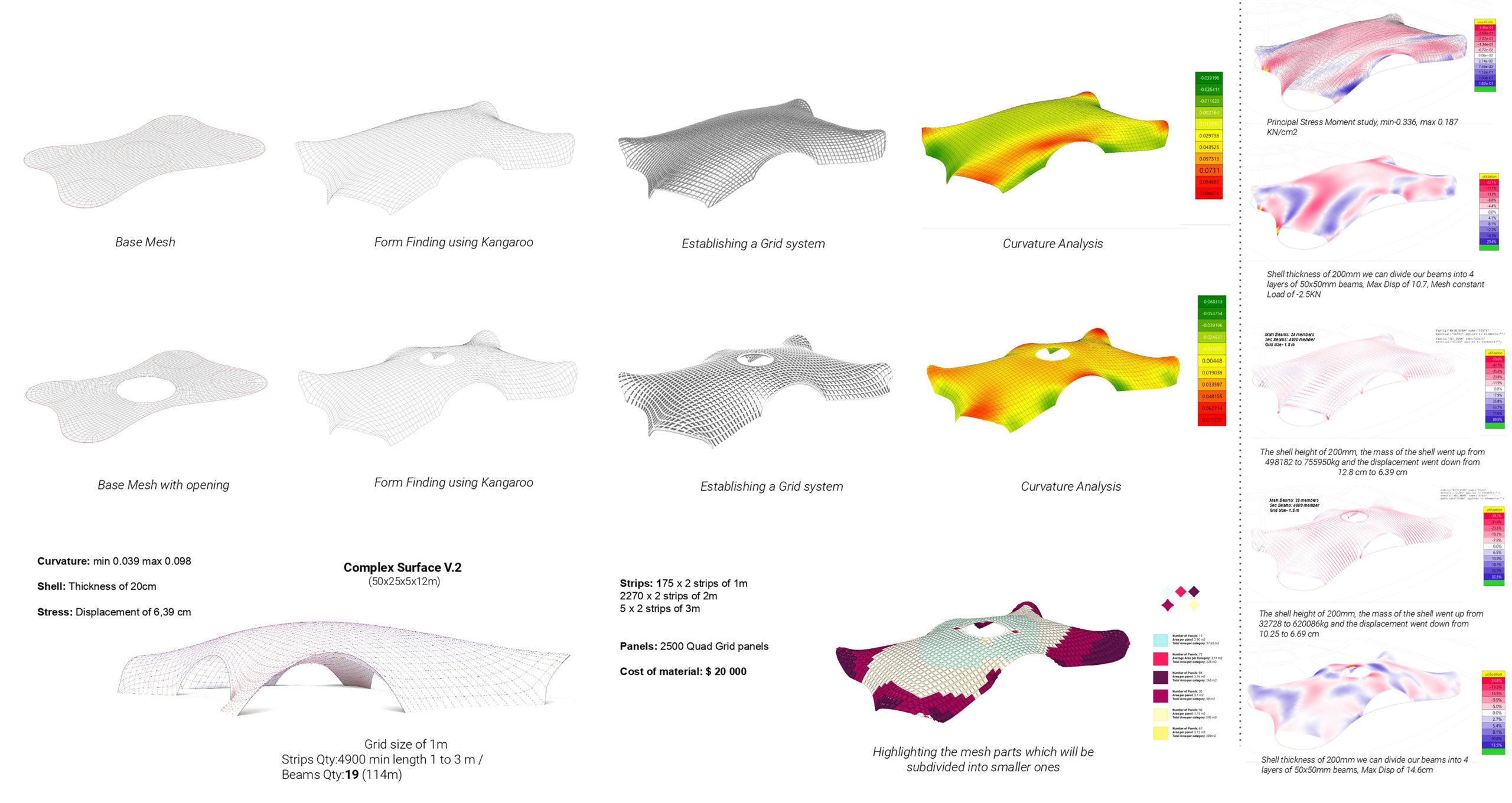
ZONING :
Regarding zoning, the project organizes programs emanating from entry points, with a central focus on the gallery and exhibition space. Auxiliary programs are strategically positioned around this central hub. Additionally, a mezzanine level was introduced to extend functionalities and cultivate meeting and discussion spaces, fostering community engagement. This spatial organization is illustrated in the section, showcasing a comprehensive exploration of functions distributed across both levels.
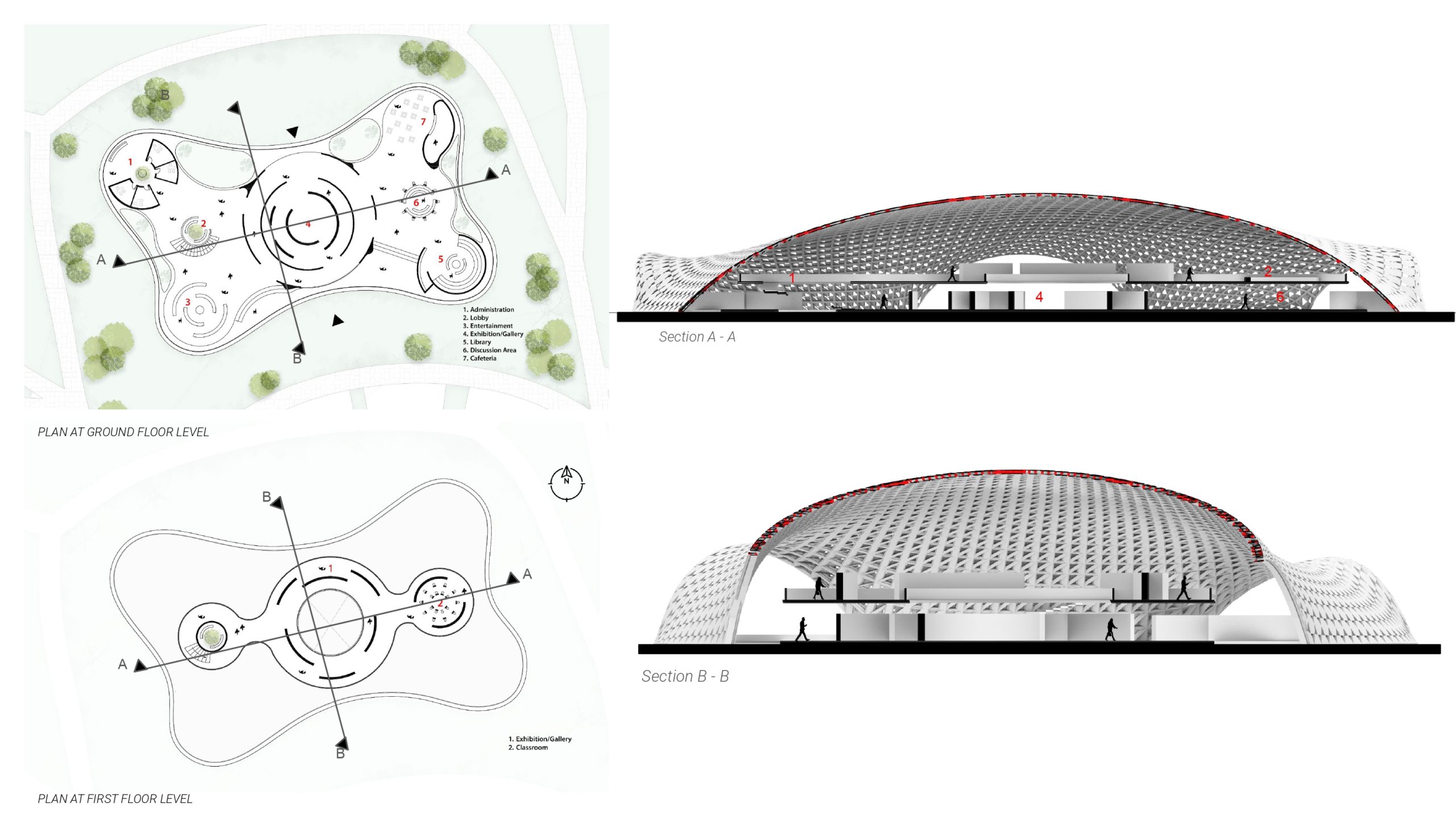
MATERIAL DETAILS AND AXONOMETRIC DIAGRAM:
Extensive experimentation defined our project journey. Initially, Glulam beams proved impractical due to manufacturing constraints and the Multihalle approach faced challenges in building enclosures. Seeking solutions, we turned to the Savil Garden approach. Employing beams as a base, we strategically framed and secured them, facilitating the enclosure of our structure with a combination of glass and plywood. Diversifying our paneling approach, we initially explored a slightly elevated design, only to discover its incompatibility with the tropical climate, necessitating a reevaluation. Subsequently, we introduced openings projected onto the mesh to allow natural light into the space, a crucial consideration given the presence of trees.
To achieve enclosure, we implemented a quad grid with tension wires, chosen over the more expensive triangular grid for its ease of installation and cost-effectiveness. Concealing the upper level involved the installation of CLT panels, followed by the integration of MEP systems, foam insulation for thermal regulation, and the finalization of the paneling system. Notably, a dome-shaped skylight was incorporated to prevent water accumulation. This iterative process reflects our commitment to practical and efficient solutions throughout the project’s development.

MATERIAL TRACEBACK :

RENDERS :


